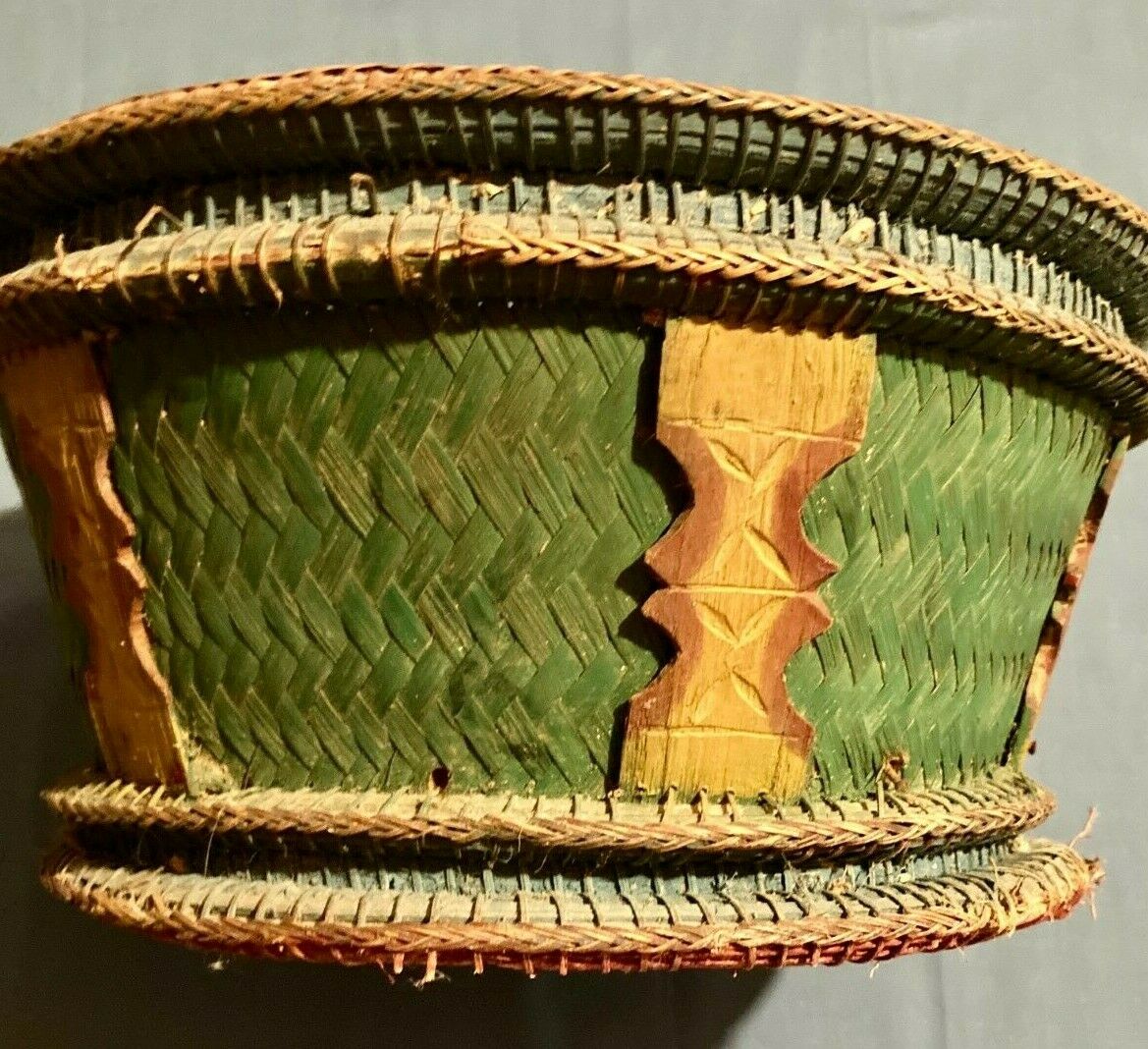-40%
RAREST Native American PIMA Antique BURDEN BASKET KIAHA (Ghiaha) 1890s
$ 782.49
- Description
- Size Guide
Description
A museum piece. I bought this in the early 70s from Tom Underwood, then the owner of Medicine Man Craft Shop in Cherokee, NC. We had bought a number of Cherokee baskets from him and I asked how much it was. "It is not for sale. I like it, but I don't know what it is, or what it is worth." I didn't know what it was either, but I took a snapshot of it and told him I would try to find out. A month later I asked a retired western Indian trader about it. "Man, those are rare as hen's teeth. That one was made for a child, as the adult ones are two to three times as big, but it may be worth more for that reason. If you can even find one, you are going to pay $ 3X."I called Tom, reminded him of our conversation and my promise to research it for him. told him what my conversation was with the retired trader friend, and exactly what I had been told, that they were rare, expensive, and easily worth X. "I'd like to make you an offer. I offer $X for it." "I thought you just told me it was worth X." "Right." "How can you offer me $X when you just told me it is worth X? What kind of bargaining is that?" "Two different things. I promised you I would try to find out what it was and how much it was worth. I did that. Now, I am trying to buy it from you. No way I can afford X. I am offering you what I can afford, not what it is worth." After more conversation including about how difficult it might be to sell a rare item in a town where nobody knew what it was, he sold it to me for what I could afford. It has been the most prized item in our collection since.
The Kiaha is the wheelbarrow of the Pima and Papago, and it uses the same principles. Put the load in the basket part, lift it off the ground using the leverage of the long sticks (cactus ribs) on the top to the height of the smaller sticks on the bottom, crawl under it and settle the tumpline on your head, stand up with the aid of the staff every user carried.
The container part is unique in Native American basketry. It is essentially knitted, unusual in American Indian basketry, then fit over the frame. The open spaces between the more tightly knitted areas is traditionally dyed with red and blue pigment, and those pigments can be detected on this one, even though the material has darkened over the last 120 years or so. As stated. one of the cactus rib cross pieces is cracked. It appears as if the string that attaches the tumpline to the basket has been made shorter for display. It would need to be longer for a girl to wear. Horsehair rope section attached.



















